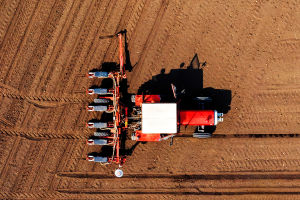Smart Fitness Navigation
Sports navigation is a tool and method that utilizes advanced technology to help athletes and fitness enthusiasts optimize their workout paths, monitor their physical state, and enhance exercise efficiency.
Whether running, cycling, hiking, or engaging in water sports, sports navigation offers real-time location tracking, route planning, speed, and distance measurement, making exercise more intelligent and scientific.
Working Principles
Sports navigation primarily relies on the following technologies:
1. Global Positioning System (GPS): GPS is the core technology of sports navigation. By communicating with multiple satellites, the device can determine the user's geographical location, speed, and direction. Typically, a GPS receiver needs to connect with at least four satellites to achieve precise positioning.
2. Inertial Measurement Unit (IMU): IMUs include accelerometers, gyroscopes, and magnetometers to detect the device's acceleration, rotation, and directional changes. IMU data can complement GPS data, especially when satellite signals are weak or lost.
3. Geographic Information System (GIS): GIS integrates geographical data and map information to help users plan routes, analyze terrain, and measure distances. Through GIS, users can select the best route to achieve their exercise goals.
4. Heart Rate Monitoring and Other Biometric Sensors: Modern sports navigation devices often incorporate heart rate monitors and other biometric sensors, such as blood oxygen levels and body temperature. These sensors’ data can be used to adjust exercise intensity, prevent overtraining, and avoid injuries.
Main Application Scenarios
1. Running and Hiking: Sports navigation devices can track real-time data such as speed, stride length, cadence, and heart rate, helping runners choose the appropriate pace and stride. Additionally, navigation devices can record routes for analysis and sharing.
2. Cycling: For cycling enthusiasts, sports navigation devices provide accurate map navigation and route planning while monitoring cycling speed, elevation gain, and pedal frequency. This information helps cyclists adjust their riding posture and speed to achieve better exercise results.
3. Mountaineering and Trail Running: In high-intensity activities requiring endurance and strength, sports navigation devices are particularly crucial. They provide high-precision altitude measurements, barometric changes, and real-time weather forecasts, aiding athletes in handling complex natural environments and sudden situations.
4. Water Sports: For swimming, rowing, surfing, and other water sports, specialized navigation devices are water-resistant and corrosion-proof, capable of monitoring speed, stroke frequency, distance, and position. Some high-end devices even integrate ocean current and tide information, providing comprehensive navigation support for water activities.
5. Skiing and Snowboarding: Skiers and snowboarders can use navigation devices to measure speed, elevation changes, sliding distance, and movement trajectories. This data helps improve sliding techniques and safety.
Conclusion
Sports navigation, as a fusion of modern technology and exercise, is rapidly transforming how we engage in physical activities and explore nature.
By integrating technologies such as GPS, IMU, and GIS, sports navigation devices not only help us with precise positioning and navigation but also enhance our performance and experience. With future technological advancements, we can expect more intelligent, personalized, and environmentally friendly sports navigation devices, offering richer and safer exercise experiences.


